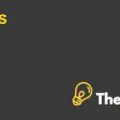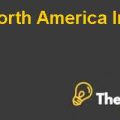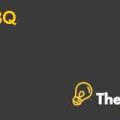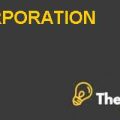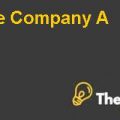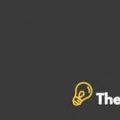
Introduction
Alpha plus Management has hired a performance analyst for timely evaluation of its performance, named as ‘Mary King’. A young and energetic person who possess a strong background in finance and has profound capabilities of making performance appraisal. The management has decided to take her services for the evaluation purposes. The two retail companies subjected to evaluation are “Ahold” which is one of the famous retail company in Netherland and “Tesco PLC” which is based in United Kingdom.
Prior to making a performance appraisal, Mary would access the information and make a review of company, its products and services, its history and the geographical area. The financial data reveals that the Tesco has a better financial performance than Ahold. A good revenue with minimum operating expenditure has led to achievement of competitive advantage.Ahold is basically a grocery store that deals in multiples of food items including cooked meal. The global recognition and the quality of food items have made it a sign of distinction for the customers worldwide. On the other hand, Tesco is one of the most successful grocery store across London. It deals in variety of products including; self-made products, fresh food items, non-food items, electronic items, household appliances and certain others, through numerous outlets internationally.The reason why consumers are inclined more towards Tesco is that it provides e-commerce services that enables them to reach more customers. This has given cost advantages to the Tesco as compare to Ahold.
Both of the companies are financially sound. As per the analysis, Tesco has more market capitalization than Ahold due to the fact that it is operated with cost leadership strategy.
Challenges faced
DuPont Analysis for the given case would be the prime challenge for Mary, as the DuPont decomposition Model entails the comparison of Return on Equity (ROE) over the multiple ends of the selection. And apparently it seems quite difficult to evaluate and compare the results. DuPont analysis will be discussed in detail later in the case.Moreover, ratio analysis cannot be an adequate measure of accuracy as it does not encounter qualitative factors. However, ratio analysis can provide reasonable grounds to decision making.
Ratio Analysis
Ratio analysis is the quantitative measure of financial health of a company. Ratio analysis is carried out with the help of financial statements and the results are used to interpret and measure different features of company like liquidity, profitability and the financial gearing. It is also used for measuring trends over the time period. Horizontal and vertical analyses are the tools that can be used to assess the trends associated with the activities. The results are thus used for performance measurement and evaluation. Attachment of analysis is provided in the appendices.
In this case scenario, Mary evaluates the financial performance of two food retailers by using certain ratios, as follows:
- Currents Assets versus Total Current Asset
- Fixed Assets versus Total Assets
- Operating Ratios
- Turnover Ratios
- Liquidity Ratios
Currents Assets versus Total Current Asset
The analysis shows the proportion of current assets in total assets. The calculations are duly attached which show the portion of cash, short term investments, receivables, prepayments and inventory in total current assets. From 2008 till 2011, Tesco has better performance as compared to Ahold. The statement of financial position shows that out of the total current assets, there is 26%, 24%, 20% and 18% of cash from 2008 to 2011 respectively. Same as short-term investment that has 9%, 11%, 8% and 10% over current assets respectively. These are for Tesco PLC on the other hand, Ahold has a cash position of 56%, 53%, 50% and 47% respectively from 2008 and short-term investments have 0.1% in every year. This shows that Ahold has a sound cash position.While the receivable and inventory ratio shows that Ahold has more worth as compared to Tesco PLC.The analysis is depicted in Appendix 1 and 3
Fixed Assets versus Total Assets
Fixed Assets are also known as Non-current Assets of the company. The analysis is done in accordance with the actual portion of fixed assets in the total assets. This basically shows the weight of non-current asset in the assets. Fixed Assets involve property, plant and equipment, intangibles, long term investments. The analysis has shown that Ahold has many more assets as relates with Tesco PLC. This analysis is shown in the excel file. The ideal percentage for an organization should not exceed 50% in aggregate in case of non-current assets. Mary should analyze this factor which is termed out to be a reflective indicator of the situation. The analysis Ahold and Tesco is mentioned in Appendix 1 and 3 respectively.....................
This is just a sample partial case solution. Please place the order on the website to order your own originally done case solution.



